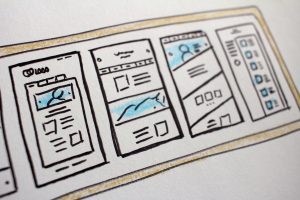Ethical website design and dark patterns
Today we are discussing ethical web design and predatory practices in web design, which is an important topic, especially for us as web designers. A lot of people actually know…

Today we are discussing ethical web design and predatory practices in web design, which is an important topic, especially for us as web designers. A lot of people actually know or see these things and see these things on websites, but they don’t really understand how manipulative and unethical they really are.
What is a dark pattern?
Dark Patterns are a way of making somebody take an action that they wouldn’t normally do, it’s using psychological tactics. Not all Dark Patterns are malicious, some can end up on websites by accident (it may have been overlooked in the testing) but some are done in order to bump up analytics numbers or force you to spend money where you may not want to.
Can purposeful dark patterns be a positive thing?
It’s important to look at the impact of implementing these practices. A business might think that they are making a huge amount of money on the front end, by getting higher sales. But there will be significant knock back in their customer services department. What chaos is it causing for their marketing team? So there’s lots of it can actually lose you money without you realising that that’s what’s actually happening. The negative impacts here can be devestating for a business and the people working within it.
The difference between bad user experience and dark patterns?
Let’s look at an example of something that might be considered a little bit of both. If you love to cook, you’ll probably be used to scrolling through recipes on the web that go on forever – by the time you’ve gotten to the ingredients list your family have already come back with next week’s big shop. This part of the page isn’t neccesarily a dark pattern, it’s just bad web design.
Recipe sites monetize mainly through advertising rights or through a subscription model. Sometimes they have a membership, so they need their pages to be long because they need a lot of content on there for SEO purposes.
Google penalizes you, if your ad to content ratio is too low. So partly I think this might be Google’s fault in some respects.
However, many of these pages also fall foul to some web design concepts that could be considered dark patterns.
One of the sneaky things that often happens, more so on mobile, is the popups. You get pop-up advertisements, or just general side bar/content ads and it’s really easy to get your finger in the wrong place and actually click through to a different page or website . Then when you attempt to go back to the recipe page, of course, you’ve got to start at the top again and scroll through.
That WOULD could count as a dark pattern because people are clicking by mistake on to ads. Therefore it looks like your post is performing better than it is with the ad service that you’re charging to put those on your site. This isn’t alway malicious as loading speeds of the pages can impact when popups jump onto the page, sometimes this will be ignorance rather than malice – but if you notice this being a problem on your website, then you should sort it out!
Digging into the motive behind the design.
At Avidmode we love a good recipe website (we do virtual cooking session at the weekend) but one of the big bugbears of the team is auto-playing content, this is a feature on what feels like every recipe website in existance. But, is this bad design or a dark pattern?
In this case, we think that auto-playing video and audio is just bad design. If somebody is interested in watching your video, they will press it and they will turn on the sound. The only action that you are forcing the viewer to take on this would be pressing the pause or mute button so in most cases it wouldn’t be considered a dark patter, however, if the website has strategically place these auto-playing moments across the site, it could be a tactic to lengthen the time spent on the web page and decrease the bounce rate, therefore it’d be a dark pattern!
Conclusion
As mentioned at the top of this post, dark patterns aren’t always malicious but they are something that we (as designers) need to keep a lid on. If you’ve noticed something on a website that you’re not sure about, pop us a comment and we’ll have a little investigate. To get in contact with us, send a message to hello@avidmode.com
If you enjoyed reading this blog post, check out similar ones in the sidebar. Feel free to get in touch with to chat about your latest project ideas - we love a good excuse for more tea.


